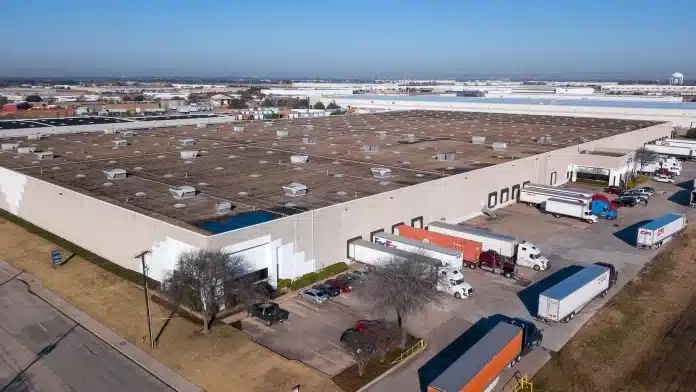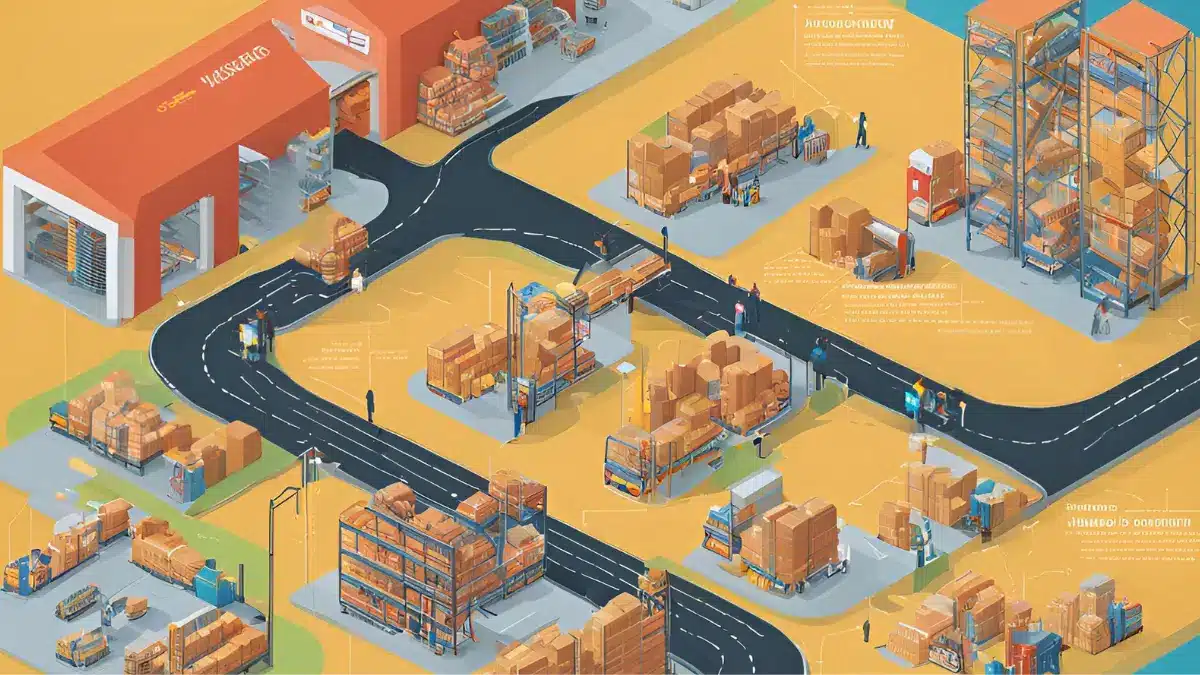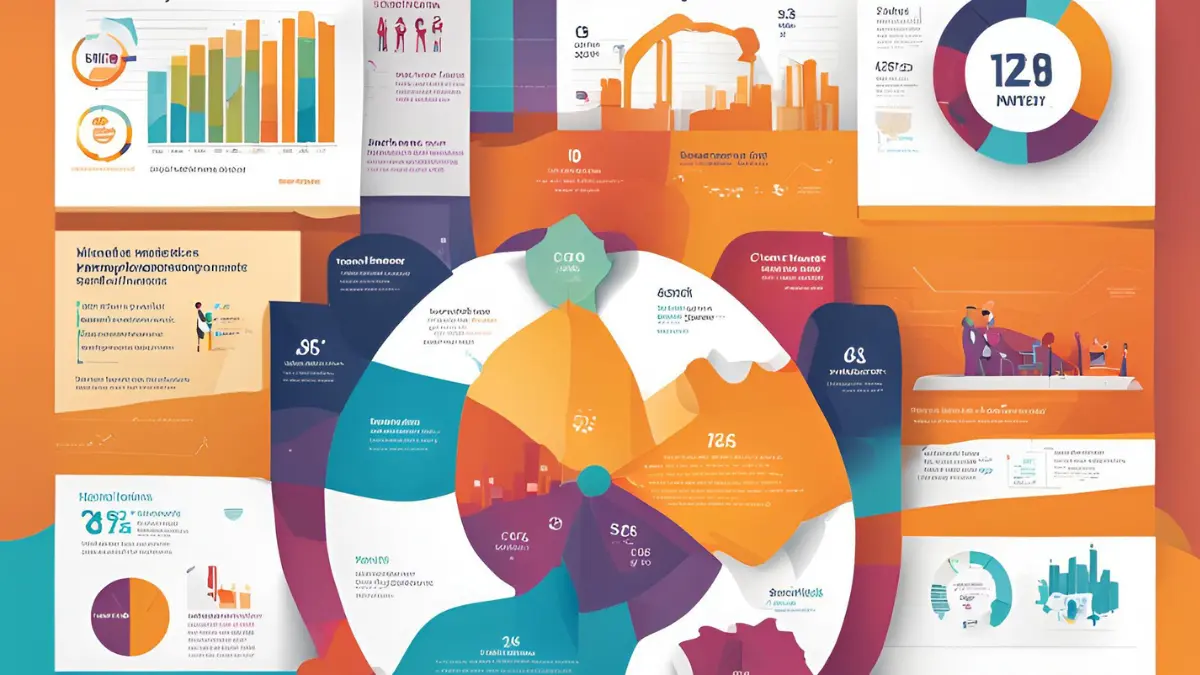In today’s global economy, distribution centers play a vital role in ensuring efficient logistics services across various industries. Understanding the importance and functioning of distribution centers is crucial for businesses looking to thrive in the modern marketplace.
Distribution centers are facilities that receive, store, and ship goods to customers. They are instrumental in streamlining operations, optimizing costs, and reducing delivery times. Unlike warehouses, distribution centers focus on the efficient movement of goods rather than long-term storage. This key difference makes distribution centers strategic assets for businesses looking to enhance supply chain management.
As businesses strive to meet customer demands and stay ahead of the competition, distribution centers have become essential components of their operations. By leveraging advanced technologies such as automated storage and retrieval systems (AS/RS), radio-frequency identification (RFID) systems, and autonomous guided vehicles (AGVs), distribution centers have revolutionized logistics operations.
In the next sections, we will dive deeper into the definition and functioning of distribution centers, explore successful case studies from various industries, discuss the distribution challenges, and explore the future of these vital facilities. Whether you are already utilizing distribution centers or considering their implementation, this comprehensive overview will provide you with the insights and knowledge necessary to navigate the dynamics of distribution centers successfully.
Key Takeaways
|
Table of Content:
Table of Content
Definition and Functioning of Distribution Centers
Distribution centers are crucial facilities in the world of logistics. They play a pivotal role in the efficient movement of goods, ensuring that products reach customers in a timely manner. By understanding how distribution centers operate, the impact of technology on their operations, and the advantages of using them, businesses can optimize their supply chain and deliver exceptional customer service.
A distribution center serves as a central hub where goods are received, stored, and processed before being distributed to customers. This process includes fulfilling orders, picking, packing, and shipping products. Distribution centers are designed to handle high volumes of inventory and streamline the order fulfillment process to meet customer demands.
Technology has significantly impacted distribution center operations. Automated storage and retrieval systems (AS/RS), radio-frequency identification (RFID) systems, and autonomous guided vehicles (AGVs) have revolutionized the way distribution centers operate. These technological advancements have led to reduced costs, increased productivity, and improved overall efficiency.
There are several advantages to using distribution centers. One of the key benefits is the ability to reduce delivery times. By strategically locating distribution centers near demand centers, businesses can ensure faster and more efficient delivery of products. This not only enhances customer satisfaction but also enables businesses to stay competitive in the market.
The use of distribution centers also provides opportunities for cost optimization. Through careful inventory management, businesses can reduce holding costs and minimize the risk of stockouts. Additionally, by consolidating inventory in distribution centers, businesses can take advantage of economies of scale and negotiate better transportation rates.
Furthermore, distribution centers contribute to improved service quality. With dedicated distribution center staff and advanced technologies, businesses can provide accurate and efficient order fulfillment, leading to higher customer satisfaction and loyalty.
Case Studies and Successful Examples
When it comes to distribution centers, real-world success stories abound. Numerous businesses have successfully implemented distribution centers to enhance their operations, leading to improved efficiency, streamlined processes, and ultimately, increased customer satisfaction. Let’s explore some case studies and examples from various industries, demonstrating the benefits of distribution centers in specific sectors.
Manufacturing industry
In the manufacturing industry, distribution centers have revolutionized supply chain management. Companies such as XYZ Manufacturing have leveraged distribution centers to effectively manage inventory, reduce lead times, and improve order fulfillment. By strategically placing distribution centers close to key markets, XYZ Manufacturing has been able to reduce transportation costs and enhance overall operational efficiency.
Healthcare sector
In the healthcare sector, distribution centers are vital in ensuring the timely delivery of medical supplies and equipment. ABC Healthcare has implemented distribution centers that are strategically located near major hospitals and clinics. This has significantly improved their response time in fulfilling urgent orders, resulting in better patient care and increased customer satisfaction.
Retail industry
The retail industry greatly benefits from distribution centers in meeting the ever-increasing demands of consumers. Retail giants like DEF Retail have successfully integrated distribution centers into their supply chain networks, enabling faster and more efficient order processing, inventory management, and fulfillment. The implementation of state-of-the-art technologies, such as automated sorting systems and advanced inventory tracking software, has further enhanced their operations.
Food and Beverage sector
In the food and beverage sector, distribution centers have played a crucial role in maintaining the freshness and quality of products. GHI Foods has established distribution centers equipped with specialized temperature-controlled zones, ensuring that perishable items are stored and transported under optimal conditions. This has resulted in reduced waste, improved product availability, and higher customer satisfaction.
These case studies and successful examples demonstrate the undeniable benefits of distribution centers in specific industries. By optimizing logistics, reducing delivery times, and improving overall operational efficiency, businesses have experienced significant growth and success. Distribution centers continue to revolutionize supply chain management and play a crucial role in meeting the demands of today’s competitive marketplace.
Challenges and Solutions in Distribution Centers
While distribution centers offer numerous benefits, they also come with challenges that businesses need to overcome in order to maximize their efficiency and effectiveness. It’s important to be aware of the potential drawbacks associated with using distribution centers and implement best practices to address these challenges head-on.
Potential drawbacks of using distribution centers
One potential drawback of using distribution centers is the high initial investment required. Building and equipping a distribution center can involve significant costs, including construction, technology systems, and staffing. Additionally, distribution center operations can be complex, requiring efficient coordination of various processes such as receiving, storing, order fulfillment, and shipping. This complexity can pose challenges in terms of resource allocation, inventory management, and operational visibility.
Despite these challenges, businesses can overcome them by implementing best practices that optimize distribution center operations and mitigate potential drawbacks.
Best practices for overcoming challenges in distribution centers
1. Optimizing Layout: Ensuring an efficient layout within the distribution center is crucial for minimizing the time and effort required to perform tasks. This includes strategically placing inventory, organizing picking and packing areas, and establishing clear pathways for material handling equipment. By optimizing the layout, businesses can streamline operations, reduce labor costs, and improve overall productivity.
2. Adhering to Safety Standards: Safety is a top priority in distribution centers to protect employees and assets. Implementing safety protocols, training programs, and regular inspections can help prevent accidents and minimize the risk of equipment damage or product loss. By maintaining a safe working environment, businesses can enhance employee satisfaction and avoid costly disruptions.
3. Embracing Automation: Automation technologies such as robotics, conveyor systems, and warehouse management systems (WMS) can significantly improve distribution center operations. Automated processes can enhance accuracy, speed up order fulfillment, and reduce labor costs. By embracing automation, businesses can optimize efficiencies and overcome the challenges associated with manual labor.
By implementing these best practices, businesses can overcome the challenges that come with using distribution centers and unlock their full potential. With an optimized layout, adherence to safety standards, and the integration of automation technologies, distribution centers can become efficient hubs that drive operational excellence and customer satisfaction.
The Future of Distribution Centers
The landscape of distribution centers is rapidly evolving to meet the changing demands of modern consumer behavior and the booming e-commerce industry. To stay ahead in this dynamic environment, businesses need to embrace emerging trends in distribution center management and technology.
One of the key trends shaping the future of distribution centers is the use of advanced data analytics. By leveraging data, businesses can gain valuable insights into customer preferences, optimize inventory management, and streamline operations. Additionally, robotics and automation are revolutionizing distribution center technology, enabling faster and more accurate order fulfillment.
Adapting distribution centers to changes in consumer behavior and e-commerce is crucial for success. In an era where speed and convenience are paramount, distribution centers are focusing on improving delivery times and ensuring accurate order fulfillment. They are also prioritizing sustainability by implementing eco-friendly practices and minimizing carbon footprints.
The future of distribution centers holds exciting opportunities for businesses willing to embrace innovation and change. By staying abreast of emerging trends in distribution center management and technology, businesses can optimize their operations, enhance customer satisfaction, and gain a competitive edge in the fast-paced world of e-commerce. Wholesale Distribution Software is the next best solution to help businesses navigate these changes. This powerful system automates key distribution processes, optimizes inventory management, and enhances order tracking, ensuring seamless operations and improved efficiency in an increasingly competitive market.
Conclusion
Distribution centres play a vital role in today’s global economy by ensuring efficient logistics services across industries. Distribution centres receive, store and deliver goods to customers, focusing on the efficient movement of goods to improve supply chain management. Technological advancements such as AS/RS, RFID systems, and automated guided vehicles have revolutionised distribution centre operations, offering benefits such as reduced delivery times and cost optimisation.
HashMicro’s ERP software can support distribution centres to adapt to emerging trends. As in advanced data analytics and automation to meet changing consumer behaviour and e-commerce demands. In addition, HashMicro offers exciting opportunities for businesses to optimise operations and gain competitive advantage. ERP Software by HashMicro excels in integration capabilities with various modules and other systems that can be customised to suit your business.
Get your free demo now to find out more features that suit your business!

























































